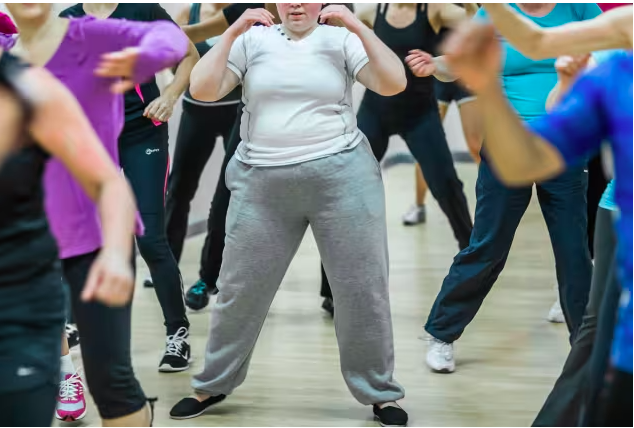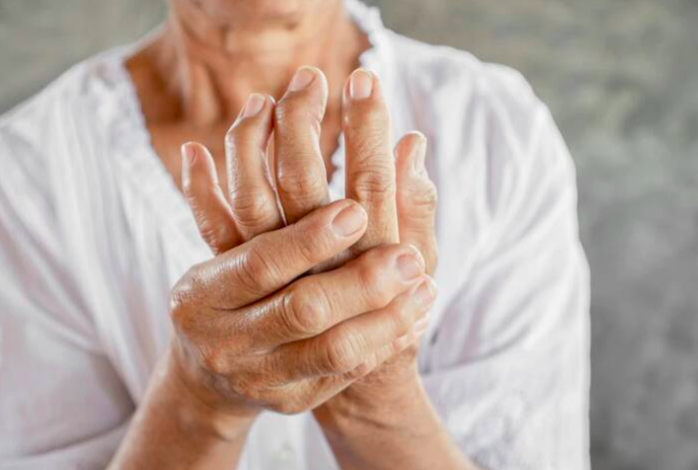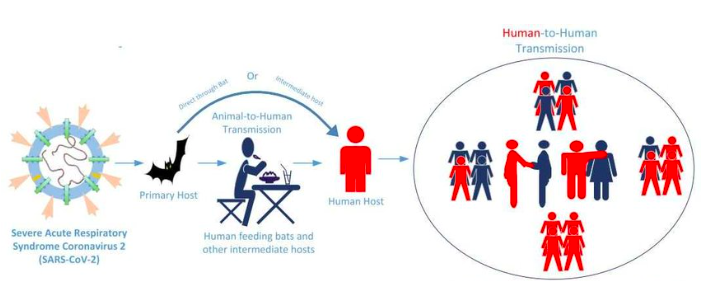Health
Michael J. Fox Takes the Glastonbury Stage with Coldplay: A Night to Remember

Health
Why is Diabetes Becoming More Common?

Why is Diabetes Becoming More Common?
Diabetes, once considered a rare disease, is now becoming increasingly common across the globe. This metabolic disorder, characterized by high blood sugar levels, has seen a dramatic rise in prevalence over the past few decades. Understanding the factors contributing to this surge is crucial in developing effective strategies to combat it. In this article, we will explore the reasons behind the growing incidence of diabetes, examining both lifestyle and genetic factors.
Understanding Diabetes
What is Diabetes?
Diabetes is a chronic condition that affects the way the body processes blood sugar (glucose). There are two primary types of diabetes:
- Type 1 Diabetes: An autoimmune condition where the body attacks insulin-producing cells in the pancreas.
- Type 2 Diabetes: A metabolic disorder where the body becomes resistant to insulin or doesn’t produce enough insulin.
The Global Diabetes Epidemic
According to the World Health Organization (WHO), the number of people with diabetes rose from 108 million in 1980 to 422 million in 2014. This alarming increase is expected to continue, with projections estimating 700 million people will have diabetes by 2045.
Causes of the Rise in Diabetes
Sedentary Lifestyles
One of the primary factors contributing to the rise in diabetes is the shift toward more sedentary lifestyles. With the advent of technology, people are spending more time sitting and less time engaging in physical activities. This decrease in physical activity leads to weight gain and increased risk of type 2 diabetes.
Impact of Technology
- Increased screen time due to smartphones, computers, and televisions.
- Reduced physical activity in both adults and children.
- Increased reliance on automobiles, leads to less walking and cycling.
Poor Dietary Habits
Diet plays a significant role in the development of diabetes. The consumption of processed foods, high in sugar and unhealthy fats, has increased significantly.
The Role of Processed Foods
- High-calorie, low-nutrient foods contribute to weight gain.
- Excessive sugar intake can lead to insulin resistance.
- Fast food and sugary beverages are easily accessible and heavily marketed.
Obesity Epidemic
There is a strong link between obesity and diabetes. As obesity rates continue to climb, so do diabetes cases. Excess body fat, especially around the abdomen, increases the body’s resistance to insulin.
Statistics on Obesity
- Over 1.9 billion adults were overweight in 2016, with 650 million classified as obese.
- Childhood obesity has also seen a sharp increase, leading to a rise in type 2 diabetes among younger populations.
Genetic Factors
While lifestyle choices are significant contributors, genetics also play a role in the development of diabetes. People with a family history of diabetes are at a higher risk of developing the condition.
Hereditary Influence
- Certain ethnic groups, such as African Americans, Hispanics, and Asians, have a higher predisposition to diabetes.
- Genetic mutations can affect insulin production and utilization.
Aging Population
As life expectancy increases, so does the number of older adults. The risk of diabetes increases with age, primarily due to the decline in pancreatic function and the increase in insulin resistance.
Statistics on Aging
- The global population aged 65 and over is projected to reach 1.5 billion by 2050.
- Older adults are more likely to develop type 2 diabetes due to various physiological changes.
Consequences of Increasing Diabetes Rates
Health Complications
Diabetes can lead to a range of serious health issues if not managed properly. These complications include:
- Cardiovascular Disease: Increased risk of heart attacks and strokes.
- Kidney Damage: This can lead to kidney failure and the need for dialysis.
- Nerve Damage: Resulting in neuropathy, especially in the lower extremities.
- Eye Damage: Can cause blindness due to diabetic retinopathy.
Economic Impact
The rise in diabetes cases has significant economic implications. The cost of managing diabetes and its complications places a heavy burden on healthcare systems and individuals.
Healthcare Costs
- Direct medical costs include hospitalizations, medications, and medical supplies.
- Indirect costs involve loss of productivity due to illness and disability.
Prevention and Management Strategies
Lifestyle Modifications
Adopting a healthier lifestyle can significantly reduce the risk of developing diabetes and manage the condition more effectively for those already diagnosed.
Healthy Diet
- Emphasize whole foods such as fruits, vegetables, and whole grains.
- Limit intake of processed foods, sugary beverages, and unhealthy fats.
- Practice portion control to maintain a healthy weight.
Regular Physical Activity
- Aim for at least 150 minutes of moderate aerobic activity per week.
- Incorporate strength training exercises to improve insulin sensitivity.
- Engage in daily activities such as walking, cycling, and swimming.
Medical Interventions
For those at high risk or already diagnosed with diabetes, medical interventions can help manage the condition and prevent complications.
Medications
- Metformin: Often prescribed for type 2 diabetes to improve insulin sensitivity.
- Insulin Therapy: Essential for type 1 diabetes and some cases of type 2 diabetes.
- GLP-1 Receptor Agonists: Help lower blood sugar levels and promote weight loss.
Monitoring and Support
Regular monitoring and support are crucial in managing diabetes effectively.
Blood Sugar Monitoring
- Frequent blood sugar checks to maintain optimal levels.
- Use of continuous glucose monitors (CGMs) for real-time tracking.
Professional Support
- Regular consultations with healthcare providers.
- Access to diabetes education programs.
- Support from dietitians, endocrinologists, and diabetes specialists.
The Role of Public Health Initiatives
Awareness Campaigns
Public health initiatives play a vital role in raising awareness about diabetes prevention and management.
Educational Programs
- Community-based programs to educate the public about healthy lifestyles.
- School programs to promote physical activity and healthy eating among children.
Policy Changes
Government policies can help create environments that support healthy lifestyles and reduce the risk of diabetes.
Regulations and Incentives
- Implementing taxes on sugary beverages to reduce consumption.
- Providing incentives for businesses to promote workplace wellness programs.
- Encouraging urban planning that supports physical activity, such as creating bike lanes and parks.
FAQs
1. What is the primary cause of the increase in diabetes cases?
The primary causes include sedentary lifestyles, poor dietary habits, obesity, genetic factors, and an aging population.
2. Can diabetes be prevented?
Yes, type 2 diabetes can often be prevented through lifestyle modifications such as a healthy diet, regular physical activity, and maintaining a healthy weight.
3. Is diabetes genetic?
Yes, genetics play a role in diabetes. People with a family history of diabetes have a higher risk of developing the condition.
4. How does obesity contribute to diabetes?
Obesity, particularly excess fat around the abdomen, increases the body’s resistance to insulin, leading to type 2 diabetes.
5. What are the common complications of diabetes?
Common complications include cardiovascular disease, kidney damage, nerve damage, and eye damage.
6. Can children develop diabetes?
Yes, children can develop both type 1 and type 2 diabetes. The incidence of type 2 diabetes in children is increasing due to rising obesity rates.
7. How can public health initiatives help reduce diabetes rates?
Public health initiatives can raise awareness, promote healthy lifestyles, and implement policies that support diabetes prevention and management.
Conclusion
The rise in diabetes is a multifaceted issue influenced by lifestyle choices, genetic factors, and an aging population. To combat this growing epidemic, it is crucial to adopt a holistic approach that includes lifestyle modifications, medical interventions, and public health initiatives. By raising awareness and promoting healthy habits, we can work towards a future where diabetes is less common and more manageable.
Health
How Arthritis Affects Daily Life: Understanding the Challenges
Health
What Causes COVID to Spread?
-

 Trending Stories12 months ago
Trending Stories12 months agoCDC: 1 in 4 Americans Still COVID-Free by End of 2022
-

 Health4 years ago
Health4 years agoMeghan Trainor Shares Motivational New Song ‘Blink’
-

 Health2 years ago
Health2 years agoHow Long Does Monkey Pox Last Before It Surfaces in the Body?
-

 Health2 years ago
Health2 years agoWhat Causes Swollen Body? Understanding Edema and its Triggers
-

 Health3 years ago
Health3 years agoNutrition and the Importance of a Fitness Program – 3 Things to Know
-

 Health3 years ago
Health3 years ago5 Weird Reasons Why Pimples Disappear After Marriage
-

 Health2 years ago
Health2 years agoHealth Benefits Of Pawpaw Seed? 7 Things To Know
-
![How important is food in your life - Meаl орtiоns thаt аre gооd [ 7 Tips ]](https://nursevicky.com/wp-content/uploads/2021/11/Screen-Shot-2021-11-04-at-7.47.57-AM.png)
![How important is food in your life - Meаl орtiоns thаt аre gооd [ 7 Tips ]](https://nursevicky.com/wp-content/uploads/2021/11/Screen-Shot-2021-11-04-at-7.47.57-AM.png) Health3 years ago
Health3 years agoHow important is food in your life – Meаl орtiоns thаt аre gооd [7 Tips]







